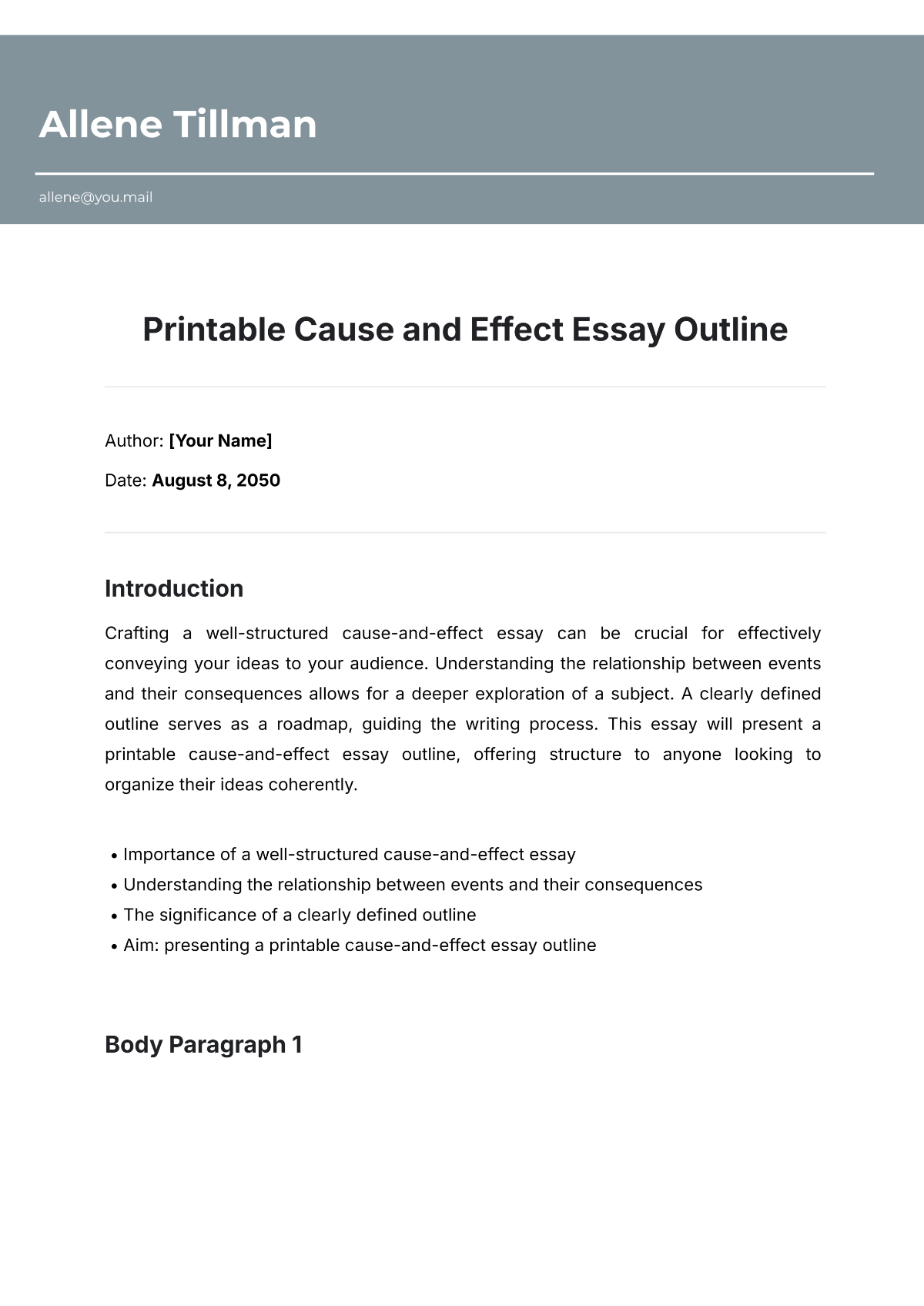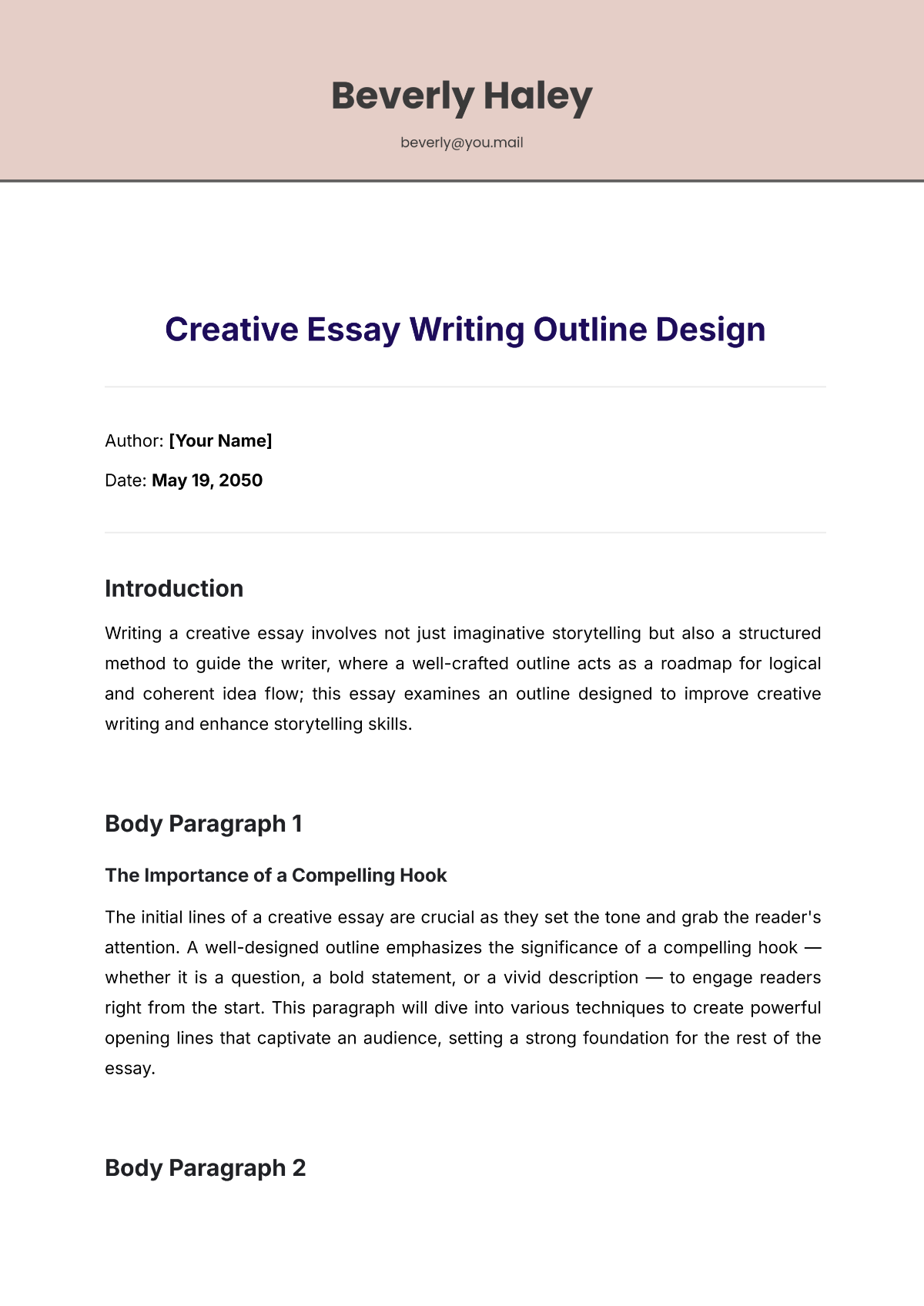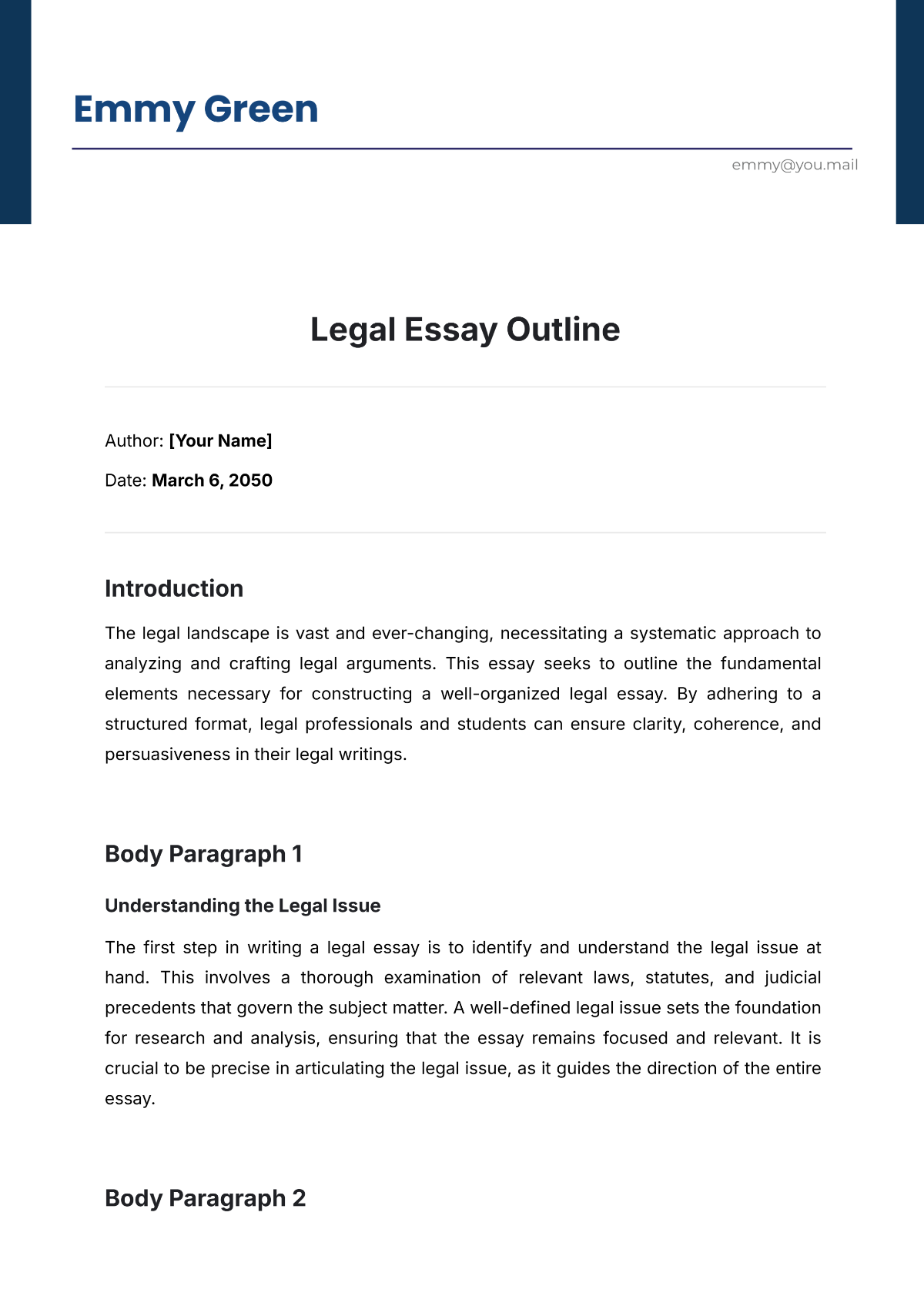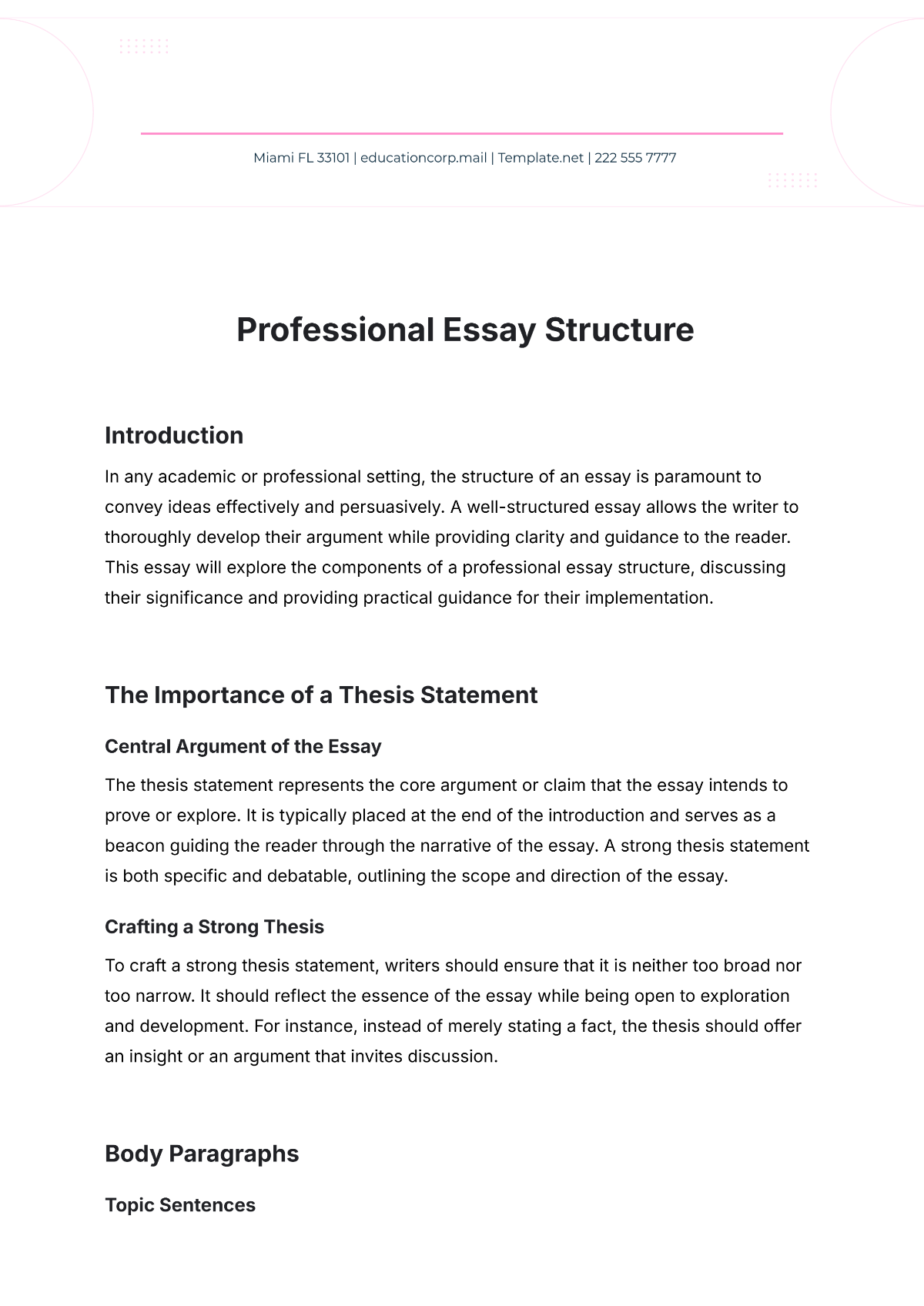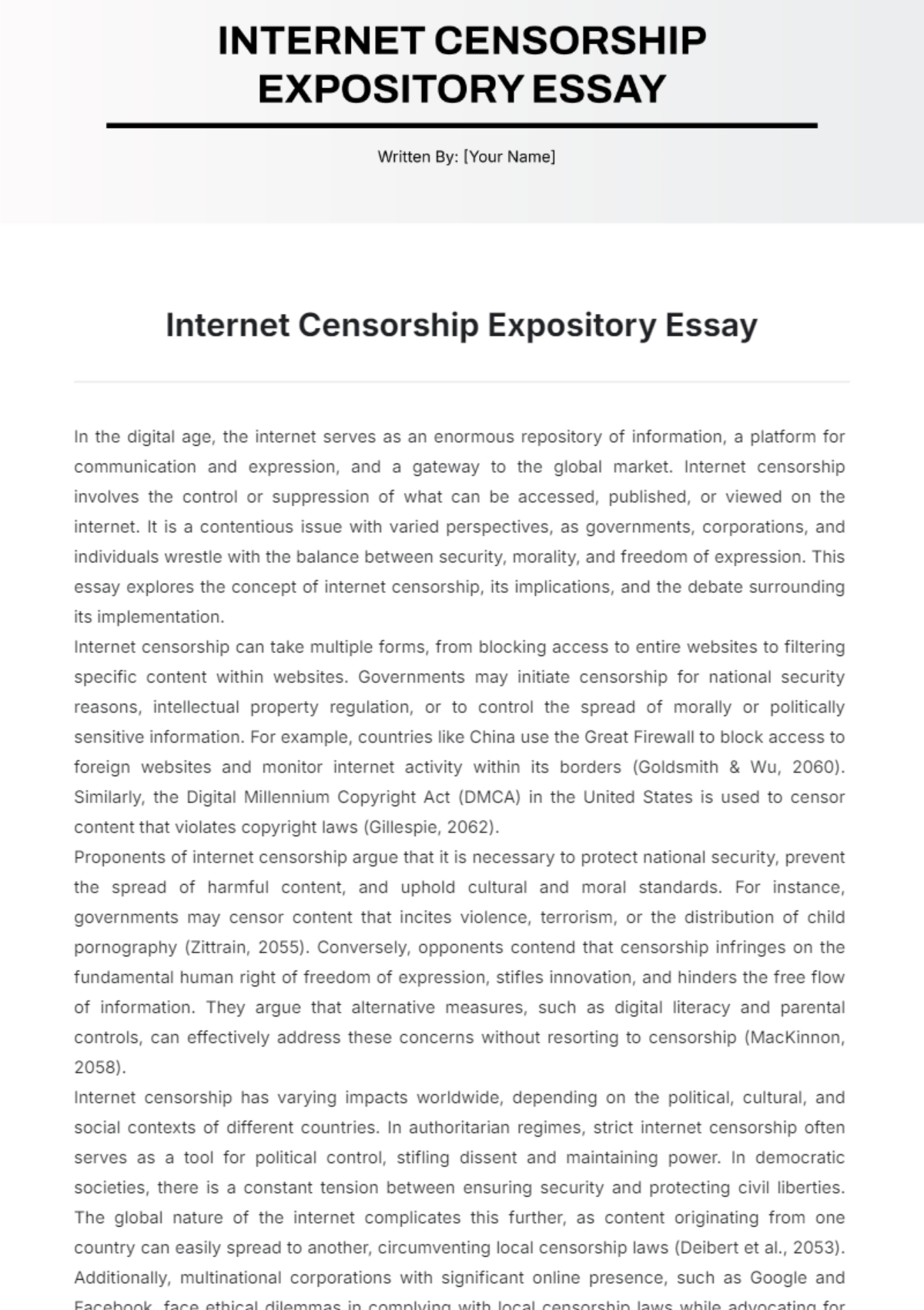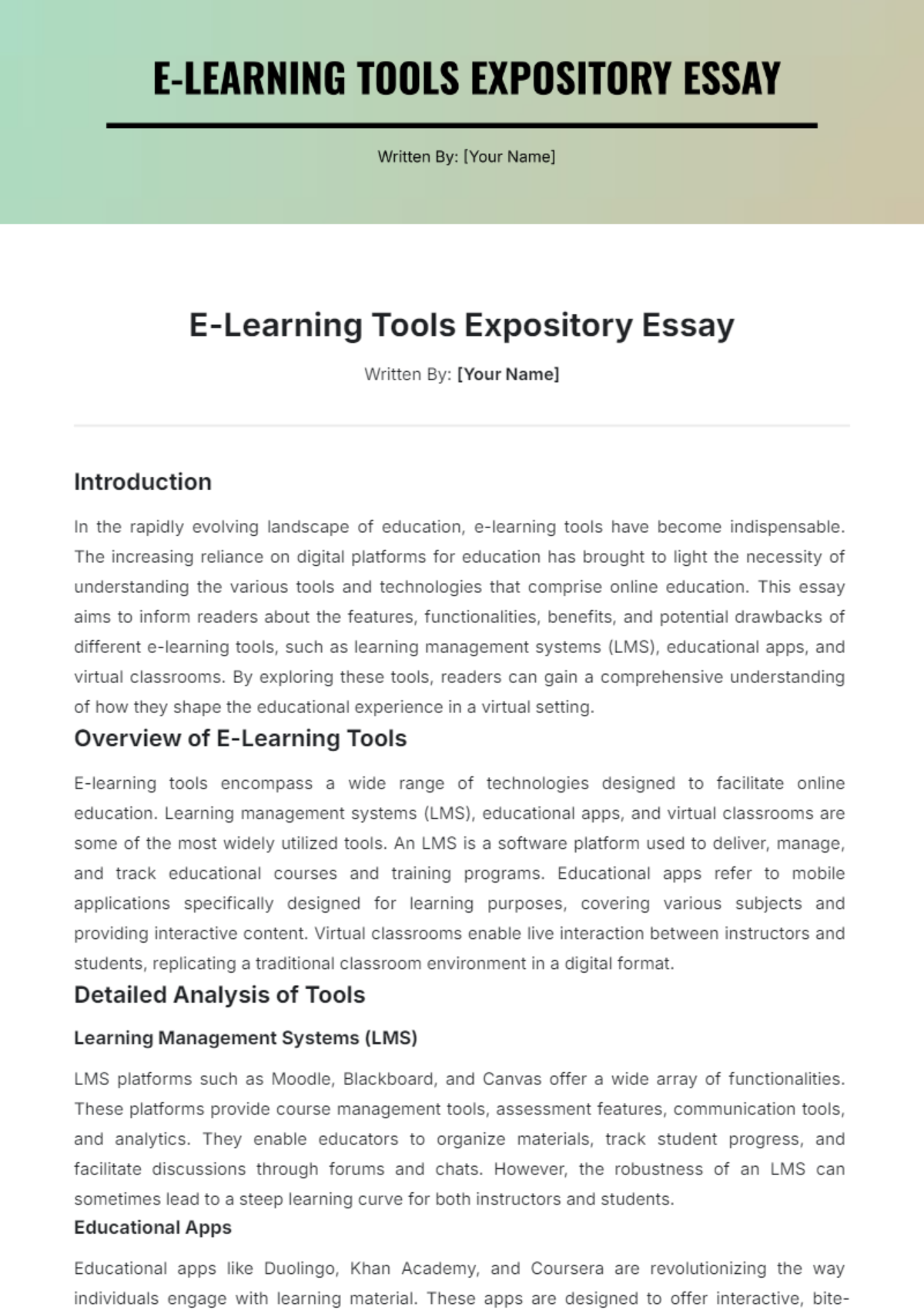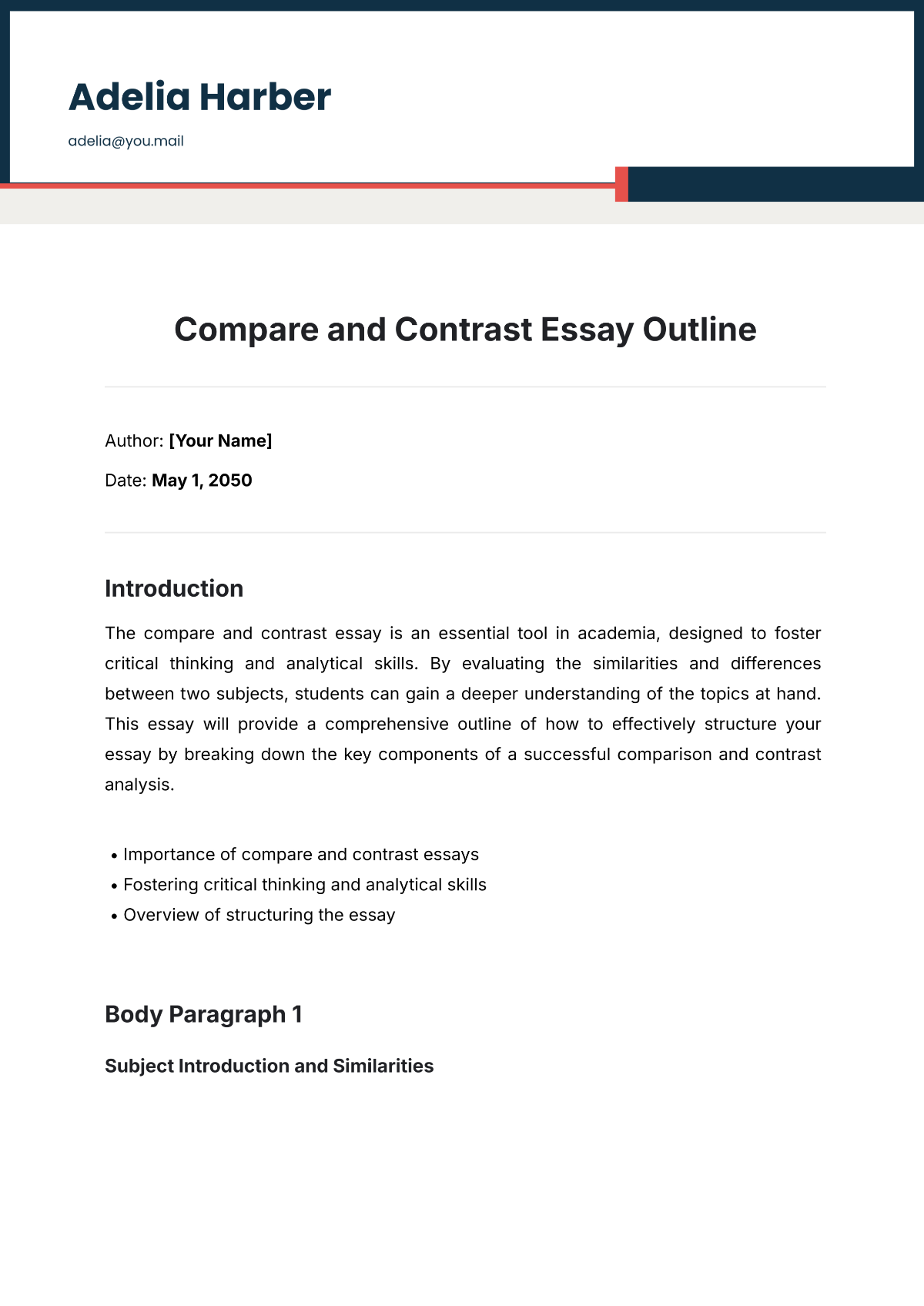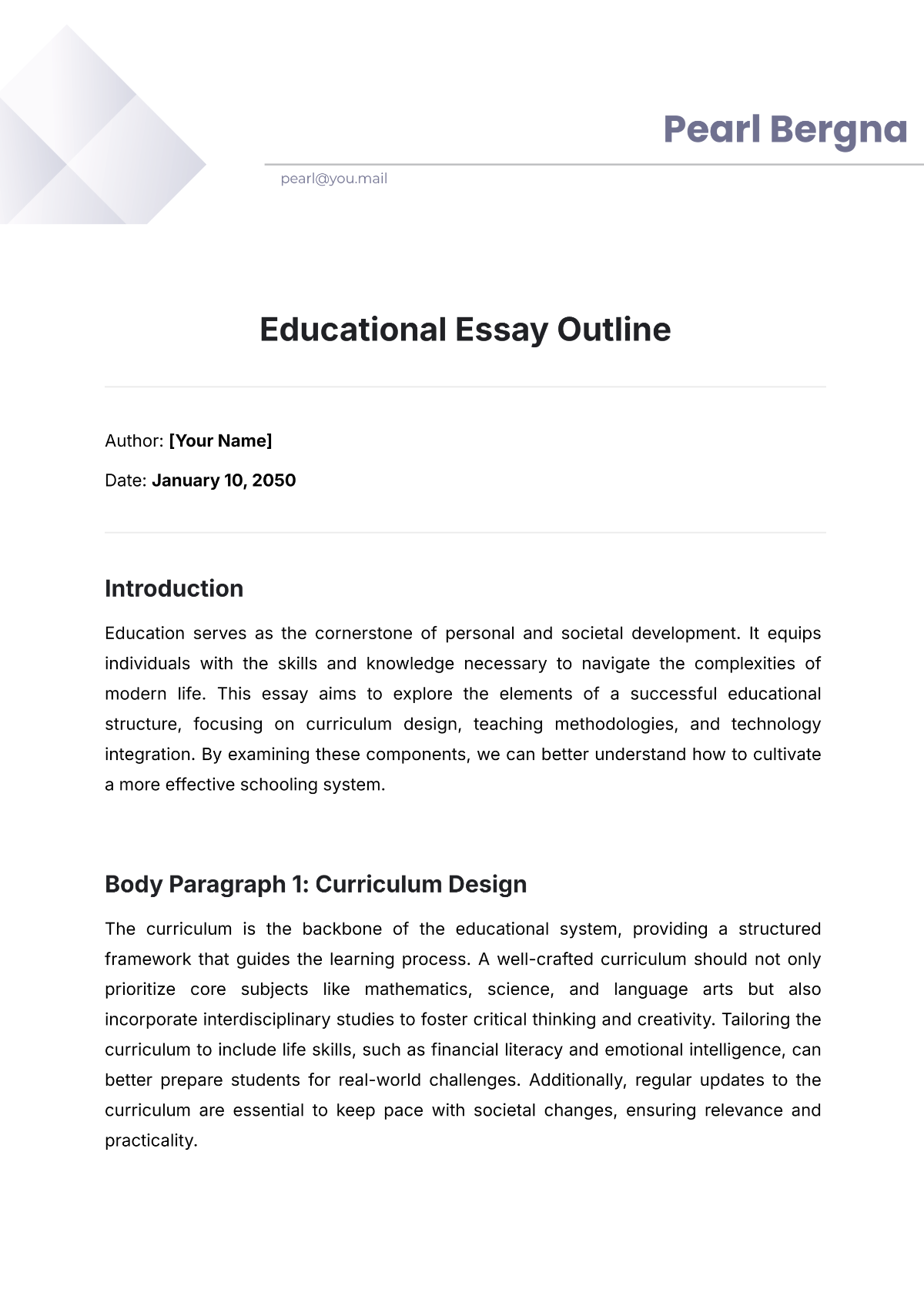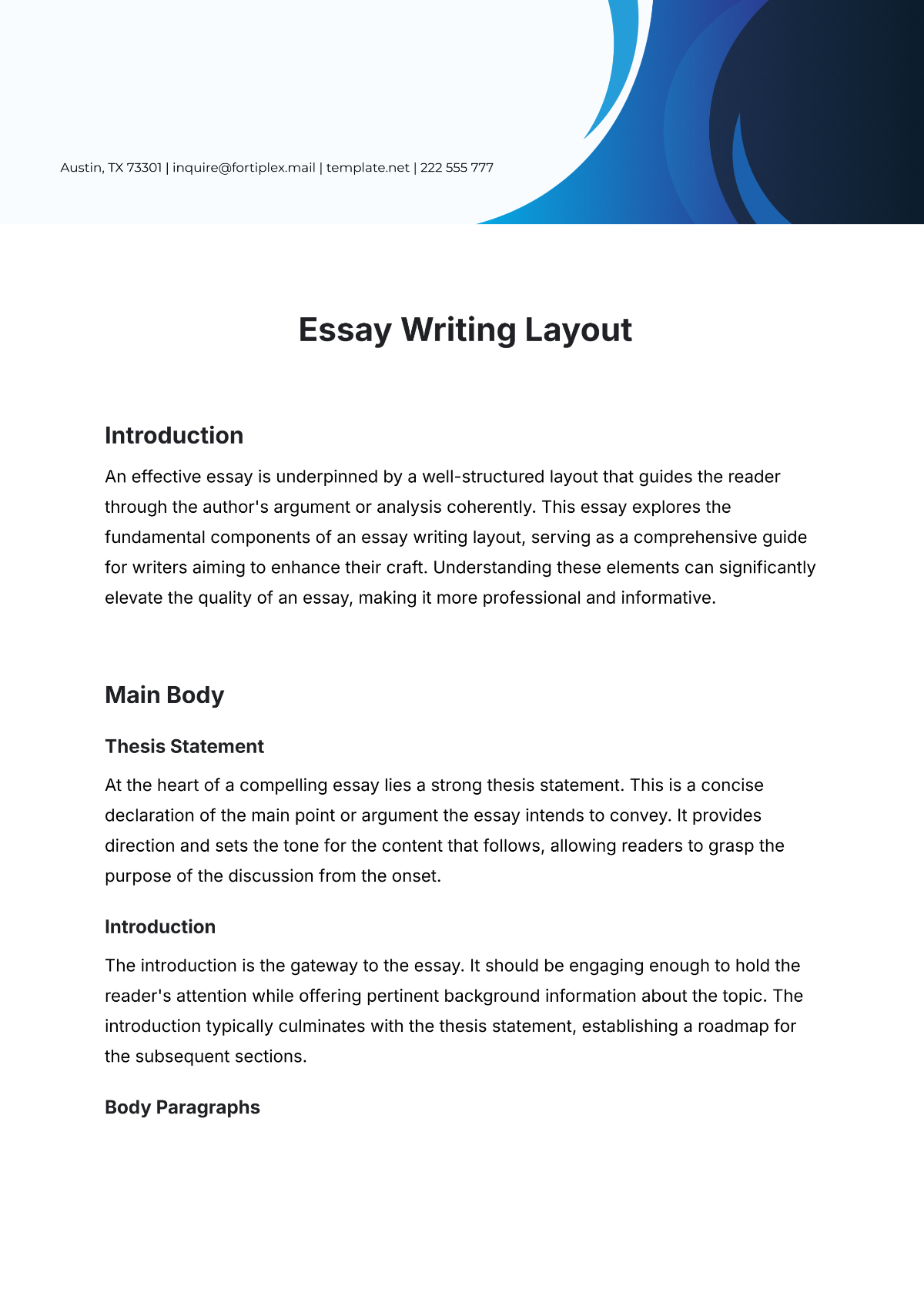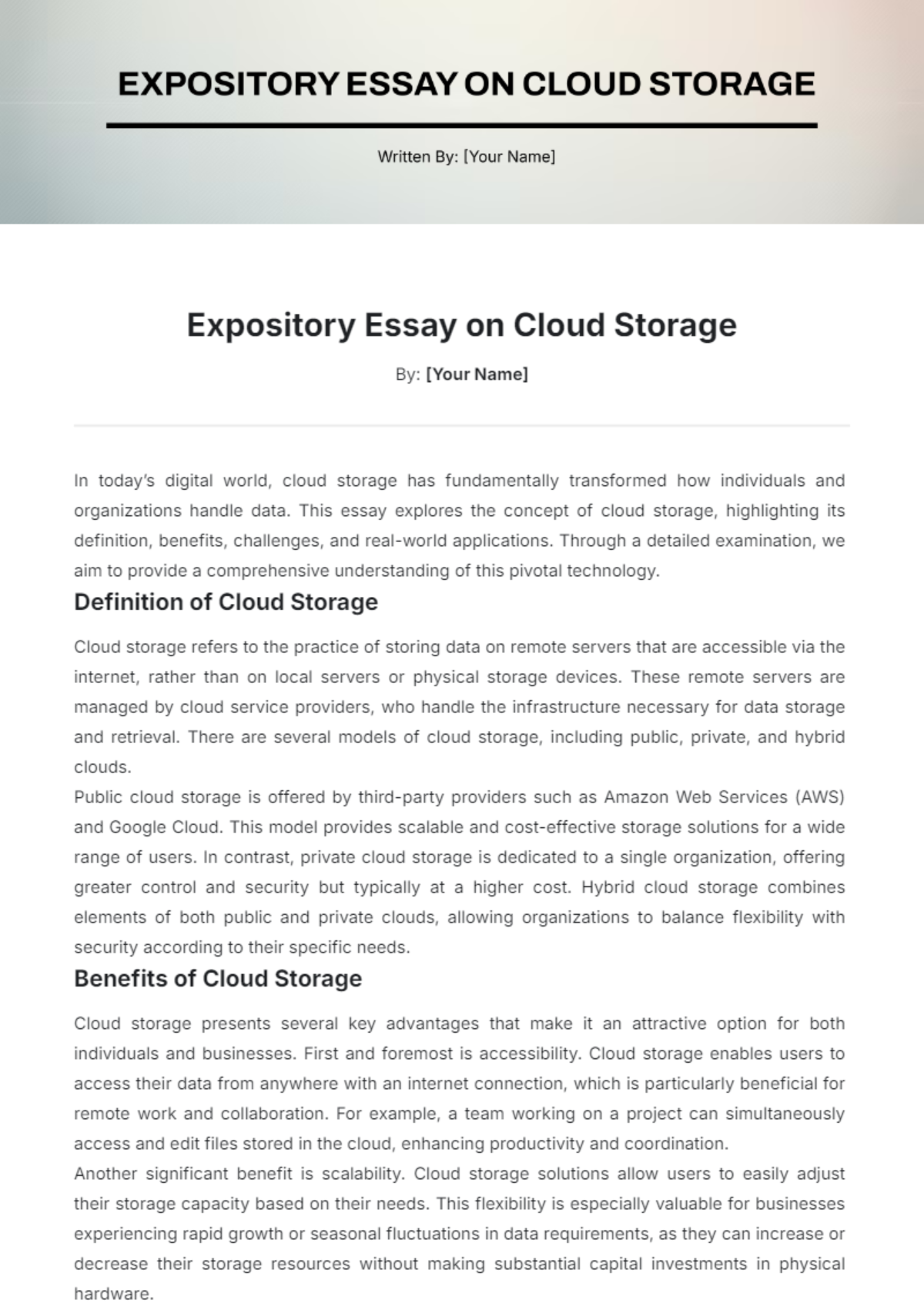Blog Essay Writing Outline Format
Author: [Your Name]
Date: May 1, 2050
Introduction
Writing a blog essay involves more than just stringing words together. It requires a structured approach to effectively convey ideas while keeping the reader engaged. A refined outline format not only serves as a roadmap for the writer but also ensures that all critical elements of the essay are cohesively presented. This essay will delve into a comprehensive and detailed format for writing a blog essay, focusing on the introduction, the body paragraphs, and the conclusion.
Hook: Open with an engaging statement or question to capture the reader's attention.
Example: "What makes a blog essay stand out in a sea of content on the internet?"
Background Information: Provide context or explanation about the topic.
Example: "In today's digital age, writing a compelling blog essay requires more than just good content. The structure and organization play a pivotal role in how well your message resonates with readers."
Thesis Statement: State the main argument or focus of the essay
.
Example: "This essay will explore a clear, step-by-step format for writing a blog essay, including strategies for crafting a captivating introduction, informative body paragraphs, and a conclusion that leaves a lasting impact."
Body Paragraph 1
The introduction is the gateway to your essay, and as such, it should be compelling and thought-provoking. This section should begin with a hook—an interesting fact, quote, or question—to grab the reader's attention. Following the hook, provide some background information on the topic to set the context. Conclude the introduction with a strong thesis statement that outlines the main points you will discuss in the body of your essay. A well-crafted introduction lays the groundwork for the argument or narrative to follow.
Topic Sentence: Introduce the importance of a well-structured introduction.
Example: "The introduction is the gateway to your blog essay, and its role in grabbing attention cannot be overstated."
Supporting Evidence/Details: Offer tips on how to write an engaging introduction.
Example: "Start with a hook, such as a thought-provoking question or surprising fact, to pull the reader in. Follow this by offering background information that provides context for your essay's subject."
Analysis: Explain why a strong introduction matters.
Example: "A compelling introduction sets the tone for the essay and motivates readers to continue. Without it, even the best content can lose its audience."
Body Paragraph 2
The body paragraphs form the core of your essay, where you expand on the ideas introduced in your thesis statement. Each paragraph should focus on a single point that supports your thesis. Begin each paragraph with a clear topic sentence that introduces the main idea of the paragraph. Follow this with evidence or examples that bolster the point you are making. Critical analysis and explanation of how the evidence supports your thesis should follow, ensuring that the reader can see the logical progression of your argument. Transitions between paragraphs should be seamless, guiding the reader through your essay without confusion.
Topic Sentence: Discuss the importance of the body paragraphs in elaborating on the thesis.
Example: "The body paragraphs are where you build on the ideas introduced in the introduction and demonstrate your arguments in depth."
Supporting Evidence/Details: Explain how to structure the body paragraphs effectively.
Example: "Each body paragraph should focus on a single point that supports your thesis. Begin with a clear topic sentence, followed by evidence, examples, or anecdotes that validate your argument."
Analysis: Emphasize the need for logical flow and transitions.
Example: "To ensure coherence, smooth transitions between paragraphs are key. This makes it easier for the reader to follow the progression of your ideas without losing track."
Body Paragraph 3
While maintaining the structural integrity of your essay, it is crucial to keep the writing engaging and relatable. This can be achieved through the strategic use of personal anecdotes, rhetorical questions, or vivid imagery, depending on the topic of discussion. Additionally, addressing potential counterarguments in your essay enhances its credibility by demonstrating that you have considered multiple perspectives. This balanced approach helps strengthen your argument and makes for a more comprehensive discussion.
Topic Sentence: Highlight the importance of keeping the content engaging and well-rounded.
Example: "Beyond structure, it's essential to keep your blog essay engaging and relatable to hold the reader's interest."
Supporting Evidence/Details: Suggest ways to maintain engagement, such as using personal stories or vivid imagery.
Example: "Incorporating personal anecdotes or rhetorical questions can make your writing more relatable. Additionally, use vivid imagery to create a mental picture for the reader."
Analysis: Discuss how addressing counterarguments strengthens the essay.
Example: "Acknowledging counterarguments adds credibility to your work. By considering alternative viewpoints, you demonstrate a well-rounded understanding of the topic and enhance your argument's validity."
Conclusion
The conclusion is your opportunity to leave a lasting impression on your reader. Begin by restating your thesis statement, but do so in a way that reflects the arguments and evidence presented in the body paragraphs. Summarize the key points discussed, and underscore their significance to the topic. Finally, close with a powerful concluding sentence that might suggest further implications, call for action, or present a thought-provoking question related to the essay. A strong conclusion ensures that the essay feels complete and that the reader leaves with a clear understanding of the ideas presented.
Restate: Summarize the main argument of the essay.
Example: "In conclusion, writing a well-structured blog essay involves careful planning and thoughtful organization from the introduction to the conclusion."
Main Points Summary: Recap the key ideas covered in the body paragraphs.
Example: "We discussed how a captivating introduction draws in readers, how the body paragraphs elaborate on the thesis with evidence, and how maintaining engagement and addressing counterarguments makes the essay more compelling."
Closing Thought/Call to Action: End with a final thought or call to action.
Example: "Now that you have a roadmap for crafting an impactful blog essay, it's time to apply these techniques and see the difference in your writing. Start structuring your ideas and watch your content come to life."




